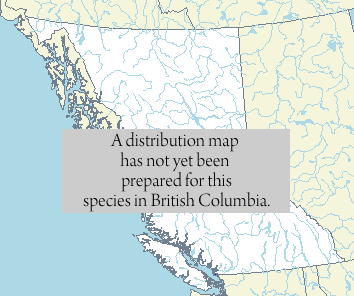The Northern Elephant Seal is the largest species of pinniped inhabiting the Northern Hemisphere. Adults females grow to about 3 m (10 ft.) in length and may weigh up to one tonne (2,200 lbs). Adult males are larger and may attain a length of 5 m (16 ft) and weigh as much as 2 tonnes (4,400 lbs). Males may also be distinguished from females by their pendulous snouts. Pups weigh about 30 kg (65 lbs) at birth and are weaned in about a month, by which time they have tripled in weight. The pelage of both sexes is a uniform light brown.
Northern Elephant Seal
Family: Otariidae
Extracted from Marine Mammals of British Columbia, Department of Fisheries and Oceans.
Map

Species Information
Biology
|
Distribution
|
Status Information
BC Ministry of Environment: BC Species and Ecosystems Explorer--the authoritative source for conservation information in British Columbia. |
Additional Notes
|
Taxonomic and Nomenclatural Links
Additional Range and Status Information Links
Additional Photo Sources
Species References
|
References for the Additional Notes: BC Species and Ecosystem Explorer. 2009. Northern Elephant Seal species summary. BC Ministry of Environment, Victoria. Available online. Le Boeuf, Burney J., Yasuhiko Naito, Anthony C. Huntley and Tomohiro Asaga. 1989. Prolonged, continuous, deep diving by northern elephant seals. Canadian Journal of Zoology 67 (10): 2514–2519. Lloyd, Julie. 2008.Peter Olesiuk on Pinnipeds. The Whelk, April 8, 2008. Wikipedia. 2009 Elephant Seal Information Page. Available online.
For further information and more photos of Northern Elephant Seals, visit RaceRocks. |